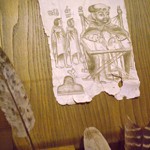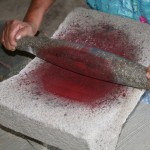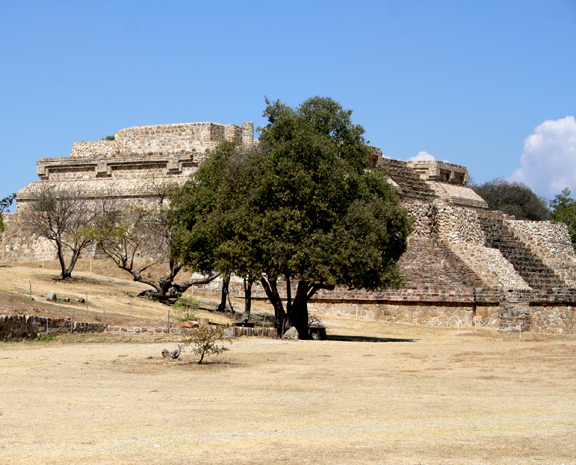We have scheduled quite a few special trips and visits throughout our four week stay. We will arrange buses for the trips to areas outside of Oaxaca city and count on you to walk or take taxi rides to places within. It is customary to provide a gratuity to bus drivers upon our return to Oaxaca city. Some kind of gift or tip might be considered when visiting indigenous communities who are sharing their life’s work. While you will be free to purchase things in these communities, please do not feel pressured to do so. At archaeological sites, NEH requires that you pay your own admission costs. In some small towns, finding a restaurant to accommodate all of us may be difficult, so we may recommend you bring snacks, water, and sack lunches for some excursions.
For dates and times with these excursions, please refer to the more detailed syllabus. Here, we just share some of the places with links and images, to give you some ideas.
Archaeological sites: Monte Albán, Atzompa, and Mitla (site map). These are on the hills and valleys close to Oaxaca city. By visiting these sites, we will gain an appreciation for the pre-Columbian cities of this region, their sometimes strategic placement, and the grandeur of their architecture. We will also travel to the Mixteca Alta region to see Yanhuitlan and Coixtlahuaca. Yanhuitlan is the site of a new excavation about to begin to restore the home of a colonial indigenous lord, alive at the time of Spanish colonization. The Yanhuitlan codex is a remarkably well preserved colonial manuscript authored by indigenous scribes; here are some recently discovered pages. Coixtlahuaca is an unexcavated site that is scattered with bits of pre-Columbian pottery, left both by Aztec colonizers (who colonized this region before the Europeans were even on the scene) and by locals. In week two we will see a bit more of the historical archaeological work that has Spanish colonial buildings as its focus, including the home of an indigenous woman of the sixteenth century — in Teposcolula — but we will mostly be there to learn about archives and manuscripts.
 Museums and Libraries: Museums you are encouraged to visit on your own, ones that would complement our archaeological and ethnohistorical excursions, include the Santo Domingo Cultural Center and the Museo Rufino Tamayo. We will be providing you with a guided visit to the Burgoa Library and its Manuscript Restoration Workshop and the Museo Textil de Oaxaca. Another library that you may wish to visit on your own, exceptional for its beauty and forward thinking, is the Biblioteca Infantil de Oaxaca (Children’s Library).
Museums and Libraries: Museums you are encouraged to visit on your own, ones that would complement our archaeological and ethnohistorical excursions, include the Santo Domingo Cultural Center and the Museo Rufino Tamayo. We will be providing you with a guided visit to the Burgoa Library and its Manuscript Restoration Workshop and the Museo Textil de Oaxaca. Another library that you may wish to visit on your own, exceptional for its beauty and forward thinking, is the Biblioteca Infantil de Oaxaca (Children’s Library).
Gardens: We will have a guided tour of the Ethnobotanical Garden of Oaxaca. Through plants we can learn about cultures, and vice versa. To name a few, we will learn about the significance of maize, stuffing fibers, the agave, and the bark used for pre-Columbian paper (amatl). The garden is located on the beautiful grounds of the former Santo Domingo convent.
 Arts communities: Teotitlan del Valle is famous for its textiles. Our visit will include demonstrations of natural dye production, including cultivation, grinding, dying, spinning, etc., by Francisco (“Paco”) González Vicente and his mother, Petra Vicente, and will examine questions of cultural continuity and change over time. At San Marcos Tlapazola two themes will guide our inquiry — what elements in clay production represent cultural continuities and what represent change, and, what is the nature of women’s role in cultural production of this type.
Arts communities: Teotitlan del Valle is famous for its textiles. Our visit will include demonstrations of natural dye production, including cultivation, grinding, dying, spinning, etc., by Francisco (“Paco”) González Vicente and his mother, Petra Vicente, and will examine questions of cultural continuity and change over time. At San Marcos Tlapazola two themes will guide our inquiry — what elements in clay production represent cultural continuities and what represent change, and, what is the nature of women’s role in cultural production of this type.
News
NEH Summer Scholar Maura Furfey was featured in the Spring 2016 issue of ECF (Ethical Culture Fieldston) Reporter. She talks about her experience the institute last summer.



Pingback: » Announcements NEH Summer Institute for School Teachers